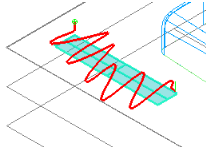Scanning is a measurement technique in which the machine keeps the probe in continuous contact with the part and records measurements as the probe moves along the probe path. If you have a probe head that is suitable for scanning, PowerInspect allows you to scan features continuously by selecting an  AutoScan or a
AutoScan or a  UserScan probing method. Two different types of scanning method are available depending on the machine configuration you are using:
UserScan probing method. Two different types of scanning method are available depending on the machine configuration you are using:
- Scan3 probing methods are available for probe heads that support 3+2 scanning. The probe head is kept at fixed orientation, while it is moved continuously along the scan path using the machine's linear axes. The linear axis movement of the machine is adapted to the surface of the part being measured.
- Scan5 probing methodsare available for probe heads that support 5-axis scanning. The probe is moved continuously along the scan path using head rotation or a combination of head rotation and linear axis movement.
PowerInspect supports the following probing methods:
HelicalPitch — Generates a helical scan path, defined as a number of revolutions from top to bottom, or from bottom to top, of the selected feature. For example:
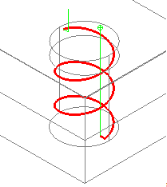
LineScan — Generates a scan path for a line. For example:

LongitudinalLines — Generates a series of linear passes (segments) parallel to the axis of the selected feature. A longitudinal path can be calculated using Points values. For example:
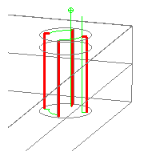
SlicesPoints — Generates a series of slices around the selected feature. The slices can be calculated using Points values. For example:

CurveScan — Generates a scan path along the points entered by the user. For example:
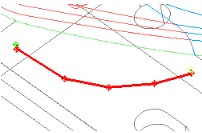
SweepScanStrip — Generates a sinusoidal curve along which the probe scans; the points specify the spine of the curve. You must specify the SurfaceScanWidth, SurfaceScanHeight, SurfaceScanPitch, LeadAngle, and LeanAngle values for the scan in the Parameters dialog. For example:
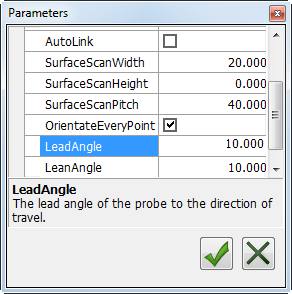
Use this method to generate a path that follows a curved surface.
SweepScan — Generates a sinusoidal probe path like SweepScanStrip, but you cannot change the probe angle or the height and width of the curve. For example:
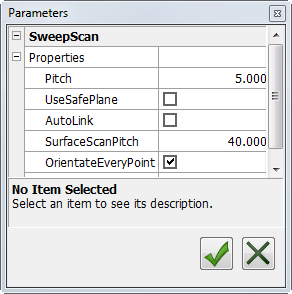
Use this method to generate a probe path that follows a flat surface. For example:
